The theme for Nutrition Week 2021 is “Eat more fruit and veggies”. Even though we know we need five servings of fruits and vegetables per day, most people in South Africa do not get enough for good health, writes Vitality dietitian Terry Harris.
Fruits and Vegetable Habits in South Africa
Guess which fruit and veg people buy the most of, which time of year people buy more fruit and veg, and what age group buys the most?
It might surprise you, but Vitality data from the last year tells us that tomatoes, bananas, and cucumbers are our most favoured purchases, with avocados and carrots not far behind. Maybe New Year resolutions are the reason people shop for more fruits and veg in January compared to June. And could it be that we see summer as salad season, as people buy less healthy fruit and veg in winter compared to warmer months. How interesting, too, that we see an annual decrease in fruit and vegetables over the festive season.
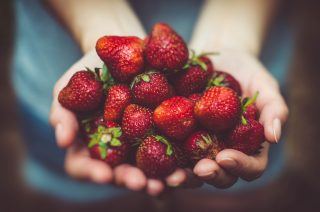
Photo by Artur Rutkowski on Unsplash
When it comes to who spends more on fruit and veg, couples who don’t have children seem to buy more, and our seniors (65 years and older) fare better than those aged between 31 and 45, inclusive.
What is a healthy diet these days?
Despite trends that come and go, the age-old reasoning that eating enough fruit and vegetables contributes to a high-quality diet holds true. But what is enough?
A recent study by the American Heart Association found that increasing your intake of whole fruit and non-starchy veg, from two servings to the recommended five servings a day, has many health benefits such as:
- 13% lower risk of death from all health-related causes
- 12% lower risk of death from cardiovascular disease, including heart disease and stroke
- 10% lower risk of death from cancer
- 35% lower risk of death from respiratory disease
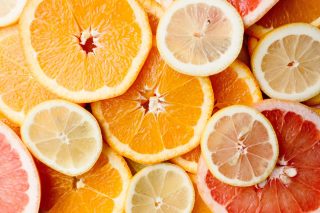 This supports the World Health Organization’s (WHO) recommendation to include at least five servings (400g) of fruit and vegetables per day. Fruit includes whole fresh or frozen fruit, but not dried or fruit juice. Fresh and frozen vegetables include leafy greens, tomatoes, carrots… everything really, except starchy vegetables such as potatoes and mealies.
This supports the World Health Organization’s (WHO) recommendation to include at least five servings (400g) of fruit and vegetables per day. Fruit includes whole fresh or frozen fruit, but not dried or fruit juice. Fresh and frozen vegetables include leafy greens, tomatoes, carrots… everything really, except starchy vegetables such as potatoes and mealies.
South Africans generally don’t get enough of the plant-based goodness we need to be optimally healthy, at about three servings a day on average.
To be clear, one serving is 80g to get to the daily recommendation of five servings. An easy way to think about how much that is, is that a serving of fruit is the size of a clenched fist and a serving of vegetables is two cupped hands.
|
is the size of a clenched fist. |
 |
vegetables is two cupped hands. |
What’s stopping us from eating healthier?
Our data tells us that people believe that healthy food is expensive to buy, takes time to cook, and that many of us don’t know how to cook healthy meals. This has driven us to create options like large discounts on HealthyFood purchases, creating classes and sharing ideas on how to cook healthier meals in our HealthyFood Studio, and even rewarding members for healthy take-out and ready-meals. These solutions help both non-Vitality members and Vitality members alike to make better choices.
Vitality helps people buy more healthy foods
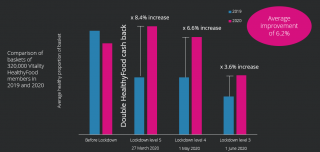
Credit: Discovery Vitality
To help people eat healthier, Vitality offers small, frequent, and fairly immediate rewards to members.
For example, during the 2020 COVID-19 lockdown, Vitality members were awarded double cashback on their HealthyFood purchases for six months. The result was an increase of 6.2% in the purchase of healthy food when compared to the previous year.
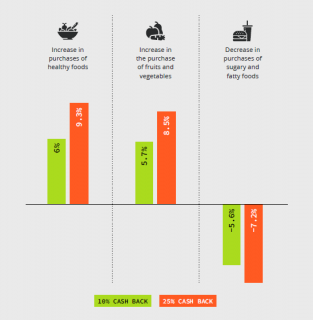
Credit: Discovery Vitality
Previous research also confirmed that the larger the cash back, the healthier a member’s basket. Cash back of 10% and 25% for healthy foods was associated with an increase in the ratio of healthy to total food purchasing, an increase in the ratio of fruit and vegetables to total food expenditure, and a decrease in the ratio of less desirable to total food expenditure.
Consider the following approaches to take in your 5 servings a day without breaking your budget:
- Be familiar with when fruit and veg are in season. They are more affordable and often tastier.
- Be price savvy. Compare different quantities, as well as how the fruit or veg is prepared and packaged as this could add to the cost.
- Find exciting new recipes to use in affordable favourites such as carrots, cabbage, tomatoes, apples, oranges, and bananas.
- Don’t forget about frozen veg and fruit. They are as healthy as their fresh counterparts yet yield no waste and are a handy backup to have in your freezer.
- A general principle for watching your budget is to plan meals and snacks in advance, ensuring you have at least five portions of fruit and veg every day, and shop according to a list.
As a dietitian, I encourage all South Africans to embrace the theme of Nutrition Week to make a long, lasting impact on our good health.
HealthyFood Hacks: Here are some affordable, quick, and easy solutions to consume enough fruit and veggies (5 servings a day)
| Serving 1 | Serving 2 | Serving 3 | Serving 4 | Serving 5 | |
| Option 1 | Strawberries with breakfast | Apple quarters with lunch | Frozen grapes for a refreshing dessert | Shredded cabbage and spinach with a lunchtime salad | Vegetable noodles with dinner (beetroot, baby marrow or butternut) |
| Option 2 | Carrot and cucumber sticks for a snack | Guacamole (smashed avocado) dip | Vegetable soup with lunch | Banana and a spoon of peanut butter as a snack | Stir fry vegetables and pineapple with dinner |
| Option 3 | Sliced pear with porridge | Melon balls as a snack | Cherry tomatoes and snap peas with lunch | Naartjie after an afternoon walk | Broccoli rice with dinner |
Healthy National Nutrition Week Recipes
Enjoy this delicious plant-based recipe, courtesy of the Discovery Vitality HealthyFood Studio.
Pickled Zucchini Spaghetti Served with Garden Peas, Mini Cauliflower Steaks, Mange Toute and Grilled Baby Carrots
Ingredients
- 500g Pickled Zucchini spaghetti
- 100g garden Peas blanched
- 80g Mange tout, trimmed and cut down the centre
- 5g Pea shoots
- Chargrilled baby Carrots, cut in half lengthwise
- 1 small head of Cauliflower cut into mini steaks
- 5g Edible flowers
- 5g Za’atar
- 30ml Olive oil
Method
01 | Drizzle cauliflower steaks with extra virgin olive oil and sprinkle with za’atar on both sides.
02 | Heat a sauté pan and cook the cauliflower steaks until golden on both sides for about 8 minutes, steaks should still be firm and still have a light crunch.
03 | Place the pickled zucchini spaghetti on the plate and top with garden peas, split mange tout, grilled carrots, and mini cauliflower steaks.
04 | Drizzle with remaining pickled zucchini sauce and garnish with pea shoots and edible flowers. Serve chilled.
You can learn how to prepare more delicious and healthy recipes with fruit and veg with our team of chefs at The Vitality HealthyFood Studio or online on The Vitality Home-Cooking Channel.
About Terry Harris
 A registered dietitian with over 17 years of experience in nutrition in South Africa.
A registered dietitian with over 17 years of experience in nutrition in South Africa.
Harris has been involved in private practice clinical nutrition, as well as the food industry, and her current role involves being responsible for providing clinical input into projects and activities that drive and enable the nutrition strategy for Discovery Vitality.


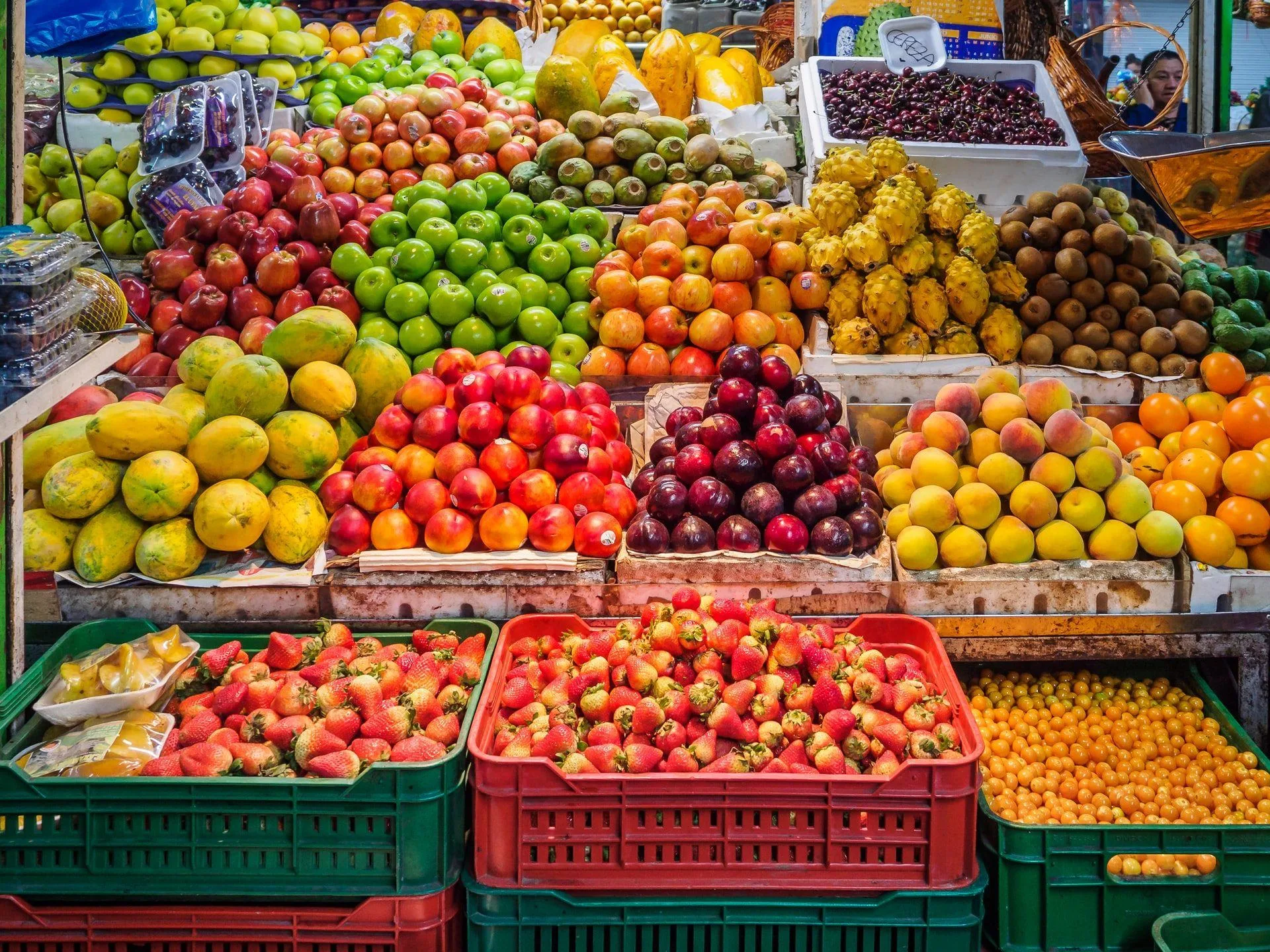
 A serving of fruit
A serving of fruit A serving of
A serving of![women [longevity live]](https://longevitylive.com/wp-content/uploads/2020/01/photo-of-women-walking-down-the-street-1116984-100x100.jpg)










